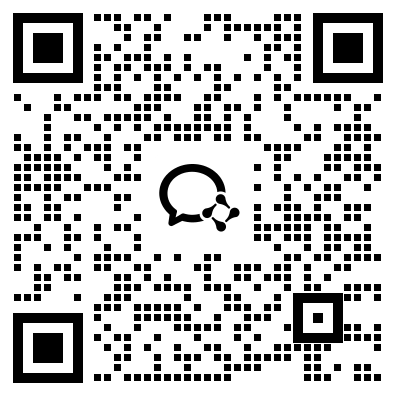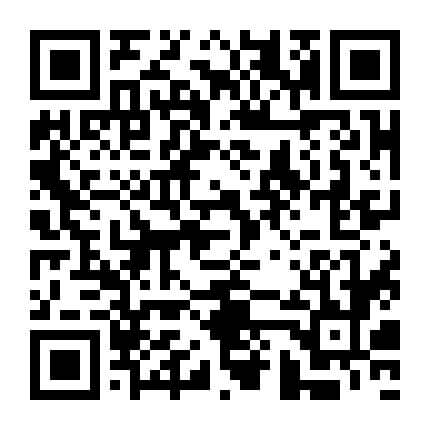考研201英语(一)在线题库每日一练(二百六十四)
摘要:以下是希赛网给大家分享考研201英语(一)在线题库每日一练,希望通过刷题可以帮助大家巩固重要知识点,对知识点查漏补缺,祝愿大家能顺利通过考试!
本文提供考研201英语(一)在线题库每日一练,以下为具体内容
1、In 1924 America's National Research Council sent two engineers to supervise a series of industrial experiments at a large telephone-parts factory called the Hawthorne Plant near Chicago. It hoped they would learn how stop-floor lighting (1)workers' productivity. Instead, the studies ended (2) giving their name to the "Hawthorne effect", the extremely influential idea that the very (3) to being experimented upon changed subjects' behavior. The idea arose because of the behavior of the women in the (4) Hawthorne plant. According to (5) of the experiments, their hourly output rose when lighting was increased, but also when it was dimmed. It did not (6) what was done in the experiment; (7)something was changed, productivity rose. A(n) (8) that they were being experimented upon seemed to be (9) to alter workers' behavior (10) itself. After several decades, the same data were (11) to econometric the analysis. Hawthorne experiments has another surprise in store (12) the descriptions on record, no systematic (13) was found that levels of productivity were related to changes in lighting. It turns out that peculiar way of conducting the experiments may have led to (14) interpretation of what happened. (15), lighting was always changed on a Sunday. When work started again on Monday, output (16) rose compared with the previous Saturday and (17) to rise for the next couple of days. (18), a comparison with data for weeks when there was no experimentation showed that output always went up on Monday, workers (19) to be diligent for the first few days of the week in any case, before (20) a plateau and then slackening off. This suggests that the alleged "Hawthorne effect" is hard to pin down.
问题1
A、affected
B、achieved
C、extracted
D、restored
问题2
A、at
B、up
C、with
D、off
问题3
A、truth
B、sight
C、act
D、proof
问题4
A、controversial
B、perplexing
C、mischievous
D、ambiguous
问题5
A、requirements
B、explanations
C、accounts
D、assessments
问题6
A、conclude
B、matter
C、indicate
D、work
问题7
A、as far as
B、for fear that
C、in case that
D、so long as
问题8
A、awareness
B、expectation
C、sentiment
D、illusion
问题9
A、suitable
B、excessive
C、enough
D、abundant
问题10
A、about
B、for
C、on
D、by
问题11
A、compared
B、shown
C、subjected
D、conveyed
问题12
A、contrary to
B、consistent with
C、parallel with
D、peculiar to
问题13
A、evidence
B、guidance
C、implication
D、source
问题14
A、disputable
B、enlightening
C、reliable
D、misleading
问题15
A、In contrast
B、For example
C、In consequence
D、As usual
问题16
A、duly
B、accidentally
C、unpredictably
D、suddenly
问题17
A、failed
B、ceased
C、started
D、continued
问题18
A、Therefore
B、Furthermore
C、However
D、Meanwhile
问题19
A、attempted
B、tended
C、chose
D、intended
问题20
A、breaking
B、climbing
C、surpassing
D、hitting
2、Over the past decade, thousands of patents have been granted for what are called business methods. Amazon.com received one for its “one-click” online payment system. Merrill Lynch got legal protection for an asset allocation strategy. One inventor patented a technique for lifting a box.Now the nation's top patent court appears completely ready to scale back on business-method patents, which have been controversial ever since they were first authorized 10 years ago. In a move that has intellectual-property lawyers abuzz, the U.S. Court of Appeals for the Federal Circuit said it would use a particular case to conduct a broad review of business-method patents. In re Bilski, as the case is known , is “a very big deal”, says Dennis D. Crouch of the University of Missouri School of Law. It “has the potential to eliminate an entire class of patents.”Curbs on business-method claims would be a dramatic about-face, because it was the Federal Circuit itself that introduced such patents with its 1998 decision in the so-called State Street Bank case, approving a patent on a way of pooling mutual-fund assets. That ruling produced an explosion in business-method patent filings, initially by emerging Internet companies trying to stake out exclusive rights to specific types of online transactions. Later, more established companies raced to add such patents to their files, if only as a defensive move against rivals that might beat them to the punch. In 2005, IBM noted in a court filing that it had been issued more than 300 business-method patents, despite the fact that it questioned the legal basis for granting them. Similarly, some Wall Street investment firms armed themselves with patents for financial products, even as they took positions in court cases opposing the practice.The Bilski case involves a claimed patent on a method for hedging risk in the energy market. The Federal Circuit issued an unusual order stating that the case would be heard by all 12 of the court's judges, rather than a typical panel of three, and that one issue it wants to evaluate is whether it should “reconsider” its State Street Bank ruling.The Federal Circuit's action comes in the wake of a series of recent decisions by the Supreme Court that has narrowed the scope of protections for patent holders. Last April, for example, the justices signaled that too many patents were being upheld for “inventions” that are obvious. The judges on the Federal Circuit are “reacting to the anti-patent trend at the Supreme Court”, says Harold C. Wegner, a patent attorney and professor at George Washington University Law School.1.Business-method patents have recently aroused concern because of( ). 2.Which of the following is true of the Bilski case?3.The word “about-face” (Line 1, Para 3) most probably means ( ). 4.We learn from the last two paragraphs that business-method patents ( ). 5.Which of the following would be the subject of the text?
问题1
A、their limited value to businesses
B、their connection with asset allocation
C、the possible restriction on their granting
D、the controversy over their authorization
问题2
A、Its ruling complies with the court decisions.
B、It involves a very big business transaction.
C、It has been dismissed by the Federal Circuit.
D、It may change the legal practices in the U.S.
问题3
A、loss of good will
B、increase of hostility
C、change of attitude
D、enhancement of dignity
问题4
A、are immune to legal challenges
B、are often unnecessarily issued
C、lower the esteem for patent holders
D、increase the incidence of risks
问题5
A、A looming threat to business-method patents.
B、Protection for business-method patent holders.
C、A legal case regarding business-method patents.
D、A prevailing trend against business-method patents.
3、When Liam McGee departed as president of Bank of America in August, his explanation was surprisingly straight up. Rather than cloaking his exit in the usual vague excuses, he came right out and said he was leaving “to pursue my goal of running a company.” Broadcasting his ambition was “very much my decision,” McGee says. Within two weeks, he was talking for the first time with the board of Hartford Financial Services Group, which named him CEO and chairman on September 29. McGee says leaving without a position lined up gave him time to reflect on what kind of company he wanted to run. It also sent a clear message to the outside world about his aspirations. And McGee isn't alone. In recent weeks the No.2 executives at Avon and American Express quit with the explanation that they were looking for a CEO post. As boards scrutinize succession plans in response to shareholder pressure, executives who don't get the nod also may wish to move on. A turbulent business environment also has senior managers cautious of letting vague pronouncements cloud their reputations. As the first signs of recovery begin to take hold, deputy chiefs may be more willing to make the jump without a net. In the third quarter, CEO turnover was down 23% from a year ago as nervous boards stuck with the leaders they had, according to Liberum Research. As the economy picks up, opportunities will abound for aspiring leaders. The decision to quit a senior position to look for a better one is unconventional. For years executives and headhunters have adhered to the rule that the most attractive CEO candidates are the ones who must be poached. Says Korn/Ferry senior partner Dennis Carey: “I can't think of a single search I've done where a board has not instructed me to look at sitting CEOs first.” Those who jumped without a job haven't always landed in top positions quickly. Ellen Marram quit as chief of Tropicana a decade age, saying she wanted to be a CEO. It was a year before she became head of a tiny Internet-based commodities exchange. Robert Willumstad left Citigroup in 2005 with ambitions to be a CEO. He finally took that post at a major financial institution three years later. Many recruiters say the old disgrace is fading for top performers. The financial crisis has made it more acceptable to be between jobs or to leave a bad one. “The traditional rule was it's safer to stay where you are, but that's been fundamentally inverted,” says one headhunter. “The people who've been hurt the worst are those who’ve stayed too long.” 1.When McGee announced his departure, his manner can best be described as being( ).2.According to Paragraph 2, senior executives' quitting may be spurred by( ). 3.The word “poached” (Line 2, Paragraph 4) most probably means ( ). 4.It can be inferred from the last paragraph that ( ). 5.Which of the following is the best title for the text?
问题1
A、arrogant
B、frank
C、self-centered
D、impulsive
问题2
A、their expectation of better financial status
B、their need to reflect on their private life
C、their strained relations with the boards
D、their pursuit of new career goals
问题3
A、approved of
B、attended to
C、hunted for
D、guarded against
问题4
A、top performers used to cling to their posts
B、loyalty of top performers is getting out-dated
C、top performers care more about reputations
D、it's safer to stick to the traditional rules
问题5
A、CEOs: Where to Go?
B、CEOs: All the Way Up?
C、Top Managers Jump without a Net.
D、The Only Way Out for Top Performers.
4、The ethical judgments of the Supreme Court justices have become an important issue recently. The court cannot(1)its legitimacy as guardian of the rule of law(2)justices behave like politicians. Yet, in several instances, justices acted in ways that(3) the court's reputation for being independent and impartial. Justice Antonin Scalia, for example, appeared at political events. That kind of activity makes it less likely that the court's decisions will be(4)as impartial judgments. Part of the problem is that the justices are not(5) by an ethics code. At the very least, the court should make itself (6) to the code of conduct that (7) to the rest of the federal judiciary. This and other similar cases (8) the question of whether there is still a (9) between the court and politics. The framers of the Constitution envisioned law (10) having authority apart from politics. They gave justices permanent positions (11) they would be free to (12 )those in power and have no need to (13)political support. Our legal system was designed to set law apart from politics precisely because they are so closely (14) . Constitutional law is political because it results from choices rooted in fundamental social (15) like liberty and property. When the court deals with social policy decisions, the law it (16)is inescapably political—which is why decisions split along ideological lines are so easily (17) as unjust. The justices must (18) doubts about the court's legitimacy by making themselves (19) to the code of conduct. That would make rulings more likely to be seen as separate from politics and, (20), convincing as law.
问题1
A、emphasize
B、maintain
C、modify
D、recognize
问题2
A、when
B、lest
C、before
D、unless
问题3
A、restored
B、weakened
C、established
D、eliminated
问题4
A、challenged
B、compromised
C、suspected
D、accepted
问题5
A、advanced
B、caught
C、bound
D、founded
问题6
A、resistant
B、subject
C、immune
D、prone
问题7
A、resorts
B、sticks
C、loads
D、applies
问题8
A、evade
B、raise
C、deny
D、settle
问题9
A、line
B、barrier
C、similarity
D、conflict
问题10
A、by
B、as
C、though
D、towards
问题11
A、so
B、since
C、provided
D、though
问题12
A、serve
B、satisfy
C、upset
D、replace
问题13
A、confirm
B、express
C、cultivate
D、offer
问题14
A、guarded
B、followed
C、studied
D、tied
问题15
A、concepts
B、theories
C、divisions
D、conventions
问题16
A、excludes
B、questions
C、shapes
D、controls
问题17
A、dismissed
B、released
C、ranked
D、distorted
问题18
A、suppress
B、exploit
C、address
D、ignore
问题19
A、accessible
B、amiable
C、agreeable
D、accountable
问题20
A、by all means
B、at all costs
C、in a word
D、as a result
5、In the idealized version of how science is done, facts about the world are waiting to be observed and collected by objective researchers who use the scientific method to carry out their work. But in the everyday practice of science, discovery frequently follows an ambiguous and complicated route. We aim to be objective, but we cannot escape the context of our unique life experience. Prior knowledge and interest influence what we experience, what we think our experiences mean, and the subsequent actions we take. Opportunities for misinterpretation, error, and self-deception abound. Consequently, discovery claims should be thought of as protoscience. Similar to newly staked mining claims, they are full of potential. But it takes collective scrutiny and acceptance to transform a discovery claim into a mature discovery. This is the credibility process, through which the individual researcher's me, here, now becomes the community's anyone, anywhere, anytime. Objective knowledge is the goal, not the starting point. Once a discovery claim becomes public, the discoverer receives intellectual credit. But, unlike with mining claims, the community takes control of what happens next. Within the complex social structure of the scientific community, researchers make discoveries; editors and reviewers act as gatekeepers by controlling the publication process; other scientists use the new finding to suit their own purposes; and finally, the public (including other scientists) receives the new discovery and possibly accompanying technology. As a discovery claim works it through the community, the interaction and confrontation between shared and competing beliefs about the science and the technology involved transforms an individual's discovery claim into the community's credible discovery. Two paradoxes exist throughout this credibility process. First, scientific work tends to focus on some aspect of prevailing Knowledge that is viewed as incomplete or incorrect. Little reward accompanies duplication and confirmation of what is already known and believed. The goal is new-search, not re-search. Not surprisingly, newly published discovery claims and credible discoveries that appear to be important and convincing will always be open to challenge and potential modification or refutation by future researchers. Second, novelty itself frequently provokes disbelief. Nobel Laureate and physiologist Albert Azent-Gyorgyi once described discovery as “seeing what everybody has seen and thinking what nobody has thought.” But thinking what nobody else has thought and telling others what they have missed may not change their views. Sometimes years are required for truly novel discovery claims to be accepted and appreciated. In the end, credibility “happens” to a discovery claim—a process that corresponds to what philosopher Annette Baier has described as the commons of the mind. “We reason together, challenge, revise, and complete each other's reasoning and each other's conceptions of reason.” 1.According to the first paragraph, the process of discovery is characterized by its( ).2.It can be inferred from Paragraph 2 that credibility process requires ( ). 3.Paragraph 3 shows that a discovery claim becomes credible after it ( ). 4.Albert Szent-Gyorgyi would most likely agree that ( ). 5.Which of the following would be the best title of the test?
问题1
A、uncertainty and complexity
B、misconception and deceptiveness
C、logicality and objectivity
D、systematicness and regularity
问题2
A、strict inspection
B、shared efforts
C、individual wisdom
D、persistent innovation
问题3
A、has attracted the attention of the general public
B、has been examined by the scientific community
C、has received recognition from editors and reviewers
D、has been frequently quoted by peer scientists
问题4
A、scientific claims will survive challenges
B、discoveries today inspire future research
C、efforts to make discoveries are justified
D、scientific work calls for a critical mind
问题5
A、Novelty as an Engine of Scientific Development.
B、Collective Scrutiny in Scientific Discovery.
C、Evolution of Credibility in Doing Science.
D、Challenge to Credibility at the Gate to Science.
点击查看【完整】试卷>>延伸阅读
- 历年考研国家分数线汇总(更新至2025年)
- 2025考研国家分数线正式发布
- 2025全国各省考研初试成绩公布时间汇总(更新中)
- 2025年考研成绩公布时间及查询流程
- 2025年全国硕士研究生招生考试(初试)温馨提示汇总
- 2025年全国硕士研究生招生考试考场规则

考研微信公众号

考研备考资料免费领取
去领取
- 1
- 1
- 7
 专注在线职业教育24年
专注在线职业教育24年









 扫描二维码
扫描二维码
 扫描二维码
扫描二维码








